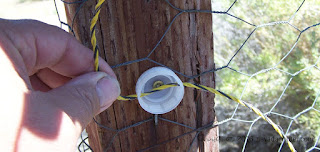Dealing with pests and predators can be a difficult task. Especially when we may not even know what we're dealing with. Fortunately in this day and age there are many electronic devices to assist us in controlling pests and predators. The first step in controlling pests and predators is in discovering what it is you're dealing with. As many of these critters may be nocturnal, you may not even know that they are coming into your garden until it's too late. Sometimes these critters will leave telltale signs as to who they are, such as tracks, droppings(fecal matter), and teeth marks, but that may not always be the case.One tool that we can use is a game camera. This is a motion activated camera that is capable of taking pictures not only during the day but at night as well. The price of these game cameras has been dropping over the years and many of them are now reasonably priced. I have used them not only to identify the pests or predator, but also to identify how these critters are getting into my garden in the first place. Kind of like finding the chinks in your armor (fencing).The camera can also help keep an eye on who is coming onto your property or going into your garden.
once you have identified your culprit, you can then easily decide the best plan of action to take care of your problem.
Now you can use a wireless webcam, but they can have limitations such as needing to be wired to your computer, or limited as to how far away they will operate, compatibility with your software or phone, ect.
Conventional cameras can be useful but not necessarily practical. The Gopro Hero camera can be controlled remotely but does not shoot pictures in the dark, nor is it motion activated. It is a pricey camera to be used for such a thing, but if you already own one it might be worth a try. It will shoot photos in a timed sequence, where you can set it to take photos every few seconds or minutes, but it's battery may rundown before you catch your culprit.
As you can see there are many ways you can go with this, but if cameras are not what your looking for there are some simple things you can try.
Tracks are a very good way to identify your enemy but some times they don't leave tracks. One way to solve this problem is to lay-down a good coating of talcum powder, powdered sugar or diatomaceous earth around the problem area. Your pest will walk threw this white powder leaving more visible tracks. Then it is a simple matter of identifying the tracks. You can also make a muddy area the animals might walk threw. The softer soil will make it easier to see tracks. Just make sure not to make it too muddy. Clay is also an option if kept damp and soft.

A good field guide to animal tracks
will not only show tracks but scats as well.





















